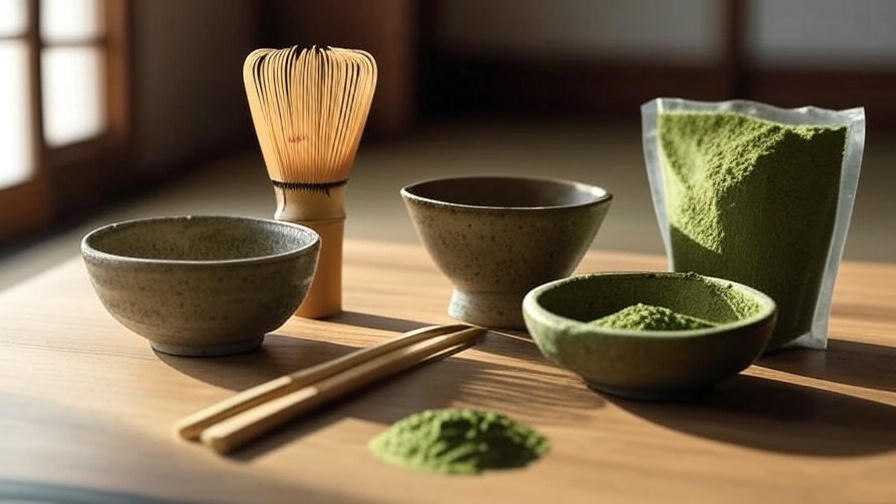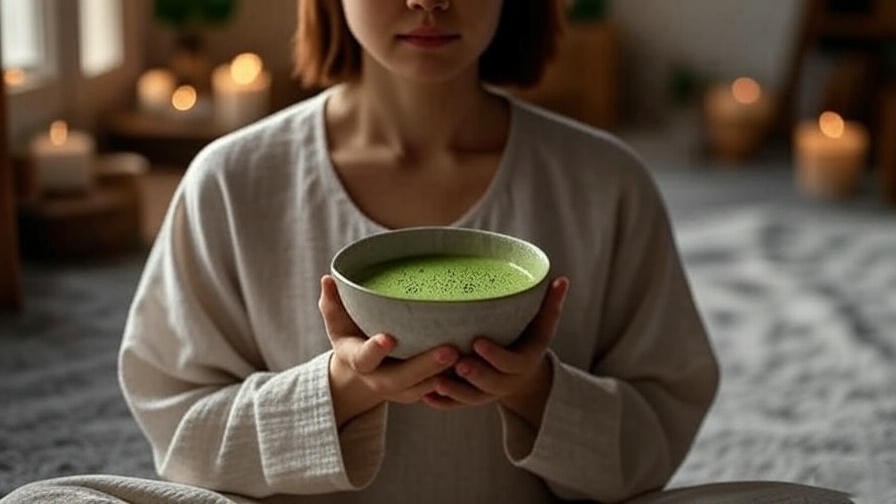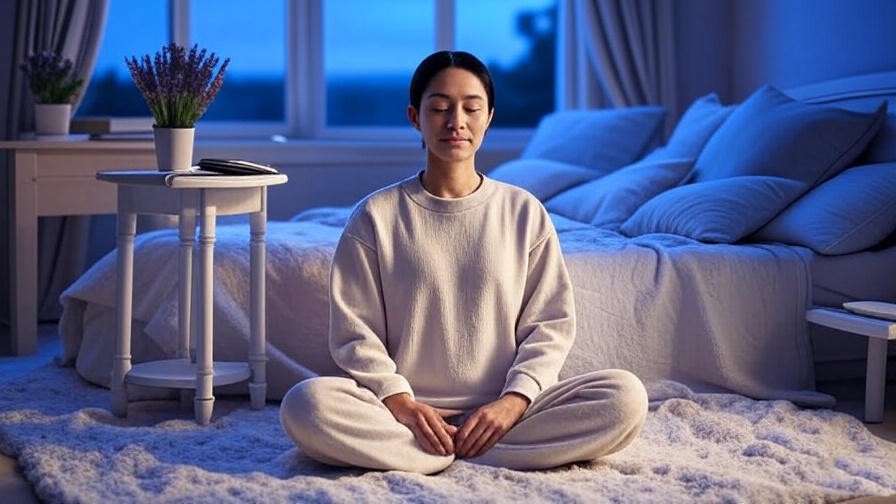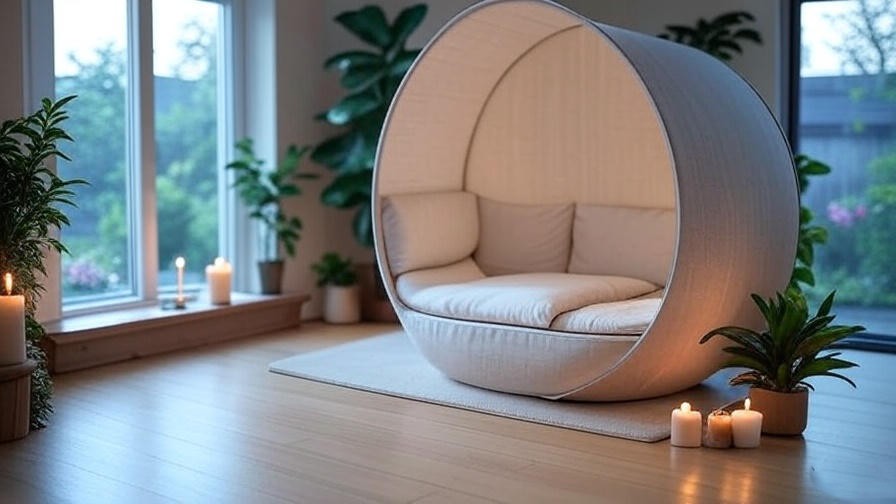Imagine this: It’s the end of a chaotic day, your mind buzzing with unfinished tasks and restless thoughts. You crave a moment of peace, a way to unwind and prepare for restful sleep. Enter matcha tea meditation, a powerful ritual that blends the serene art of preparing ceremonial matcha with the mindfulness of meditation. This practice, rooted in ancient Zen traditions, offers a natural, accessible way to reduce stress, enhance focus, and improve sleep quality. In this comprehensive guide, we’ll explore how matcha tea meditation can transform your daily routine, backed by science and expert insights, to help you achieve deep calm and holistic well-being.
Whether you’re new to mindfulness or a seasoned practitioner, this article provides a step-by-step roadmap to mastering this soothing ritual. Drawing on my extensive experience in holistic wellness and meditation, I’ll share practical tips, scientific evidence, and expert advice to make matcha tea meditation a cornerstone of your journey toward better sleep and happiness. Let’s dive into this calming practice and discover how it can bring tranquility to your life.
What is Matcha Tea Meditation?
Understanding Matcha Tea
Matcha, a vibrant green tea powder, has been cherished for centuries, originating with Japanese Zen monks who used it to enhance focus during meditation. Unlike regular green tea, matcha is made from shade-grown tea leaves, ground into a fine powder, delivering a concentrated dose of antioxidants, particularly epigallocatechin gallate (EGCG). This compound, along with L-theanine, promotes calm alertness, making matcha uniquely suited for mindfulness practices. Its smooth, umami flavor and gentle energy boost distinguish it from other teas, creating an ideal foundation for a meditative ritual.
The Essence of Meditation
Meditation is the practice of cultivating mindfulness, focusing the mind to achieve mental clarity and emotional balance. Research, including a 2018 study in Frontiers in Psychology, shows meditation reduces cortisol levels, alleviates anxiety, and improves sleep quality. By training the mind to stay present, meditation helps quiet racing thoughts, a common barrier to restful sleep. When paired with matcha’s calming properties, meditation becomes even more accessible, offering a dual approach to stress relief and well-being.
Combining Matcha and Meditation
Matcha tea meditation merges the mindful preparation of matcha with focused meditation, creating a ritual that engages the senses and fosters presence. The act of whisking matcha becomes a meditative practice in itself, encouraging you to slow down and savor each moment. This synergy makes the ritual approachable for beginners while offering depth for experienced meditators. By combining the sensory experience of matcha with intentional mindfulness, this practice cultivates calm, clarity, and a deeper connection to the present.
The Science Behind Matcha Tea Meditation
How Matcha Enhances Mindfulness
Matcha’s magic lies in its unique blend of L-theanine and caffeine. L-theanine, an amino acid, promotes alpha brain wave activity, which is associated with a state of relaxed alertness. A 2017 study in Nutritional Neuroscience found that L-theanine in matcha reduces stress and enhances focus without causing drowsiness. Unlike coffee’s jittery energy, matcha’s caffeine provides a steady, sustained boost, making it ideal for meditation. This combination helps you stay present, amplifying the mindfulness benefits of the ritual.
Meditation’s Impact on Sleep and Stress
Meditation is a proven tool for managing stress and improving sleep. A 2015 meta-analysis in JAMA Internal Medicine showed that mindfulness meditation significantly reduces insomnia and enhances sleep quality. By lowering cortisol levels and activating the parasympathetic nervous system, meditation helps calm the body’s stress response. For those struggling with anxiety or restless nights, this practice offers a natural solution to achieve deeper, more restorative sleep.
Synergy of Matcha and Meditation
The ritual of preparing matcha enhances meditation by grounding you in the present moment. Each step—sifting the powder, whisking it into a frothy consistency, and savoring its warmth—engages your senses, reinforcing mindfulness. Dr. Andrew Weil, a renowned integrative medicine expert, notes that rituals like tea preparation can deepen meditative focus by creating a structured, calming experience. Together, matcha’s biochemical benefits and meditation’s mental clarity create a powerful synergy for stress relief and emotional balance.
Benefits of Matcha Tea Meditation for Sleep and Well-Being
Improved Sleep Quality
Matcha tea meditation addresses common sleep disruptors like anxiety and overactive thoughts. L-theanine in matcha promotes relaxation, while meditation helps quiet the mind, making it easier to fall asleep and stay asleep. A 2020 study in Sleep Medicine Reviews found that mindfulness practices improve sleep latency and duration. Practitioners of matcha tea meditation often report falling asleep faster and waking up refreshed, as the ritual creates a calming pre-sleep routine.
Stress and Anxiety Relief
Chronic stress affects millions, with 77% of Americans reporting stress-related health issues, according to the American Psychological Association. Matcha tea meditation counters this by combining L-theanine’s calming effects with meditation’s stress-reducing benefits. The ritual’s sensory focus—sipping warm matcha, inhaling its earthy aroma—helps shift your nervous system into a state of calm. Regular practice can lower anxiety levels, making daily challenges feel more manageable.
Enhanced Focus and Emotional Balance
Matcha’s gentle energy supports sustained focus during meditation, helping you stay present without overstimulation. This clarity carries over into daily life, improving productivity and emotional resilience. A 2019 study in Mindfulness found that regular meditation enhances emotional regulation, reducing mood swings. By incorporating matcha, you amplify these benefits, fostering a balanced, centered mindset.
Holistic Wellness Connection
Matcha tea meditation aligns perfectly with holistic well-being, a core focus of this website. It promotes mindfulness, supports sleep, and nurtures happiness, creating a ripple effect across your mental and physical health. By integrating this practice into your routine, you cultivate a lifestyle of intentional calm, aligning with broader goals of joy and balance.
How to Practice Matcha Tea Meditation: A Step-by-Step Guide
Setting the Scene
Creating a calming environment is key to effective matcha tea meditation. Choose a quiet space free from distractions, ideally with natural light or soft lighting. A comfortable cushion or chair can enhance relaxation. Consider adding calming elements like a candle or incense, but keep it simple to avoid sensory overload. Turn off notifications and set an intention to be fully present for the next 10–20 minutes.
Preparing Matcha Mindfully
The preparation of matcha is a meditative act in itself. Here’s how to do it:

- Gather Tools: Use a bamboo whisk (chasen), matcha bowl (chawan), sifter, and ceremonial-grade matcha.
- Sift the Matcha: Place 1–2 teaspoons of matcha into a sifter to remove clumps, ensuring a smooth texture.
- Heat Water: Warm water to 175°F (80°C)—hot but not boiling—to preserve matcha’s flavor.
- Whisk Mindfully: Add a small amount of water to the matcha and whisk in a “W” motion until frothy.
- Add More Water: Pour in 2–4 ounces of water and stir gently.
Focus on each step, noticing the texture of the powder, the sound of the whisk, and the vibrant green color. This mindfulness sets the stage for meditation.
The Meditation Practice
Once your matcha is prepared, follow these steps:
- Find a Comfortable Position: Sit upright, holding your matcha bowl.
- Focus on Breath: Take slow, deep breaths, inhaling for 4 counts and exhaling for 6.
- Engage Senses: Sip the matcha slowly, noticing its warmth, taste, and aroma. Let these sensations anchor you.
- Choose a Meditation Style: Try a body scan, focusing on relaxing each part of your body, or a gratitude meditation, reflecting on things you’re thankful for.
- Stay Present: If your mind wanders, gently return to the sensation of the matcha or your breath.
Aim for 10–15 minutes, adjusting based on your comfort level. Beginners can start with 5 minutes and gradually increase.
Timing and Frequency

Practice matcha tea meditation in the morning for focus or in the evening to unwind before bed. A daily ritual maximizes benefits, but even 3–4 sessions per week can yield noticeable improvements in sleep and stress levels. Consistency is key to building a habit.
Choosing the Right Matcha for Meditation
Types of Matcha
Ceremonial-grade matcha is ideal for meditation due to its smooth, umami flavor and high L-theanine content. Culinary matcha, while suitable for cooking, is too bitter for this ritual. Look for vibrant green matcha, indicating freshness and quality, and avoid dull or yellowish powders.
Sourcing Quality Matcha
Choose organic, authentic matcha from reputable sources like Japan’s Uji or Nishio regions. Brands like Ippodo or Matcha Konomi are trusted for their ceremonial-grade offerings. Check for certifications and read reviews to ensure purity. Avoid mass-produced matcha, which may contain additives or lack potency.
Tools and Accessories

Essential tools include a bamboo whisk (chasen), matcha bowl (chawan), and sifter. A teaspoon or bamboo scoop (chashaku) ensures accurate measurements. For budget-conscious beginners, a small whisk and a regular bowl work fine, but investing in quality tools enhances the experience.
Common Mistakes to Avoid in Matcha Tea Meditation
Preparation Pitfalls
The mindful preparation of matcha is central to the ritual, but beginners often make mistakes that can disrupt the experience. Overheating the water (above 175°F/80°C) can burn the matcha, resulting in a bitter taste that detracts from the calming effect. Using low-quality, culinary-grade matcha instead of ceremonial-grade can also compromise flavor and L-theanine content, reducing the meditative benefits. Rushing through the preparation process—such as skipping sifting or whisking improperly—creates a lumpy, unappealing drink. To avoid these pitfalls, take your time, use the right tools, and prioritize quality ingredients to ensure a smooth, flavorful matcha that enhances mindfulness.
Meditation Missteps
Meditation can feel daunting for beginners, and common challenges can disrupt the flow of matcha tea meditation. One frequent mistake is expecting instant calm or becoming frustrated when thoughts wander. Meditation is a skill that improves with practice, so approach it with patience. Distractions, like a noisy environment or checking your phone, can also break focus. Create a dedicated space and silence devices to stay present. Another misstep is forcing a rigid meditation style—experiment with different techniques, like focusing on the matcha’s warmth or visualizing calm, to find what resonates with you.
Balancing Caffeine Intake
Matcha contains caffeine (about 20–45 mg per serving, less than coffee), which can concern those sensitive to stimulants, especially if practicing in the evening. To avoid disrupting sleep, limit matcha tea meditation to earlier in the day if you’re caffeine-sensitive. For evening sessions, use less matcha powder (e.g., 1 teaspoon instead of 2) to reduce caffeine intake. Monitor how your body responds and adjust timing accordingly. Most people find matcha’s L-theanine counteracts caffeine’s jittery effects, but individual responses vary, so listen to your body.
Expert Tips to Elevate Your Matcha Tea Meditation
Enhancing the Ritual

To deepen your matcha tea meditation, incorporate complementary practices. Journaling after your session can help process emotions or set intentions, enhancing mindfulness. For example, write down three things you’re grateful for while sipping your matcha. Pairing the ritual with gentle yoga, like a 5-minute cat-cow stretch, can relax the body further, preparing you for meditation. Certified meditation coach Sarah Thompson suggests adding a single point of focus, like a candle flame, to anchor your attention during the practice. These additions make the ritual more immersive and personalized.
Personalizing the Practice
Matcha tea meditation is versatile and can be tailored to your goals. For creativity, visualize ideas flowing as you sip your matcha. For relaxation, focus on slow, deep breaths and the warmth of the bowl in your hands. To support sleep, try a gratitude meditation, reflecting on positive moments from your day. Set a specific intention before each session, such as “I am calm and present,” to guide your practice. Experiment with different durations or meditation styles to find what feels most natural, ensuring the ritual aligns with your unique needs.
Building a Consistent Habit
Consistency is key to reaping the benefits of matcha tea meditation. Start by scheduling sessions at the same time each day, such as after breakfast or before bed, to build a routine. Use a habit-tracking app or a simple calendar to mark your progress, which can boost motivation. If time is tight, even a 5-minute session can be effective. To stay committed, remind yourself of the ritual’s benefits—better sleep, less stress, and greater clarity. Over time, this practice will become a cherished part of your wellness journey.
Frequently Asked Questions (FAQs)
Q1: Can I practice matcha tea meditation if I’m sensitive to caffeine?
Yes, but opt for early-day sessions or use a smaller amount of matcha (e.g., 1/2 teaspoon) to minimize caffeine. L-theanine in matcha promotes calm, but test your tolerance and avoid evening sessions if needed.
Q2: How long should a matcha tea meditation session last?
Beginners can start with 5–10 minutes, while experienced practitioners may prefer 15–20 minutes. The key is consistency, so choose a duration that feels sustainable for your routine.
Q3: Is matcha tea meditation suitable for beginners?
Absolutely. The ritual is simple and accessible, with the sensory act of preparing matcha guiding you into mindfulness. Start with short sessions and follow the step-by-step guide above.
Q4: Can I use other teas for this meditation practice?
While other teas like chamomile or green tea can be calming, matcha’s unique L-theanine content makes it ideal for this ritual. Its preparation process also enhances mindfulness more than steeping loose-leaf teas.
Q5: How soon can I expect to see sleep or stress benefits?
Many notice improved relaxation after a few sessions, with sleep benefits emerging within 1–2 weeks of regular practice. Consistency and a calming environment enhance results.
Additional Resources for Holistic Well-Being
Complementary Practices
To amplify the benefits of matcha tea meditation, explore related practices on this site. Try our “5 Yoga Poses for Better Sleep” to relax your body before bed, or practice breathwork techniques like the 4-7-8 method to deepen calm. Dream journaling can also complement the ritual, helping you process emotions and improve sleep quality. These practices align with the holistic wellness focus of matcha tea meditation, creating a comprehensive approach to mindfulness and rest.
Recommended Reading and Tools
For deeper learning, consider these resources:
- Books: “The Book of Tea” by Kakuzo Okakura for insights into tea ceremonies, or “The Miracle of Mindfulness” by Thich Nhat Hanh for meditation guidance.
- Apps: Insight Timer offers guided meditations that pair well with matcha preparation.
- Tools: Invest in a quality matcha set from brands like Ippodo or a meditation cushion for comfort.
Explore trusted websites like Mindful.org for additional mindfulness tips.
Conclusion
Matcha tea meditation is more than a ritual—it’s a gateway to deep calm, better sleep, and holistic well-being. By combining the mindful preparation of ceremonial matcha with focused meditation, this practice offers a natural, accessible way to reduce stress and enhance happiness. Backed by science and enriched with expert insights, the steps outlined in this guide empower you to start your own matcha tea meditation journey today. Whether you’re seeking relief from anxiety or a restorative pre-sleep routine, this ritual delivers lasting benefits.
Take the first step tonight: gather your matcha, create a serene space, and savor the tranquility of this practice. Share your experience in the comments below or explore more mindfulness tips on our site to deepen your wellness journey. With consistency, matcha tea meditation can transform your daily life, bringing you closer to the calm and joy you deserve.













